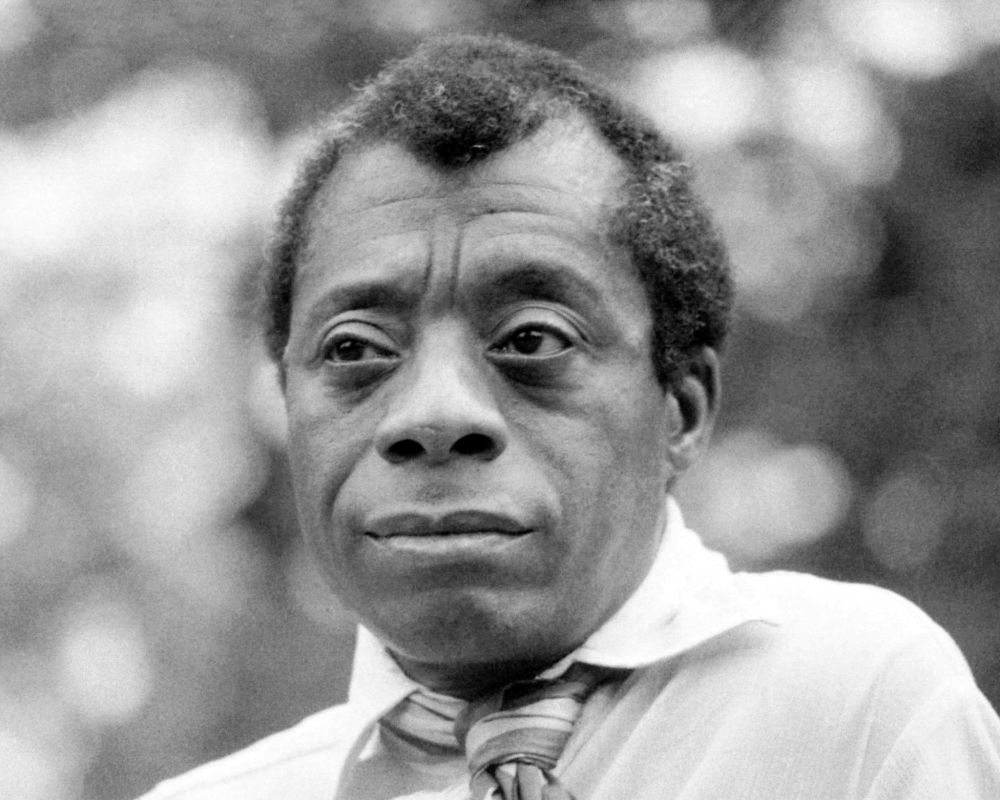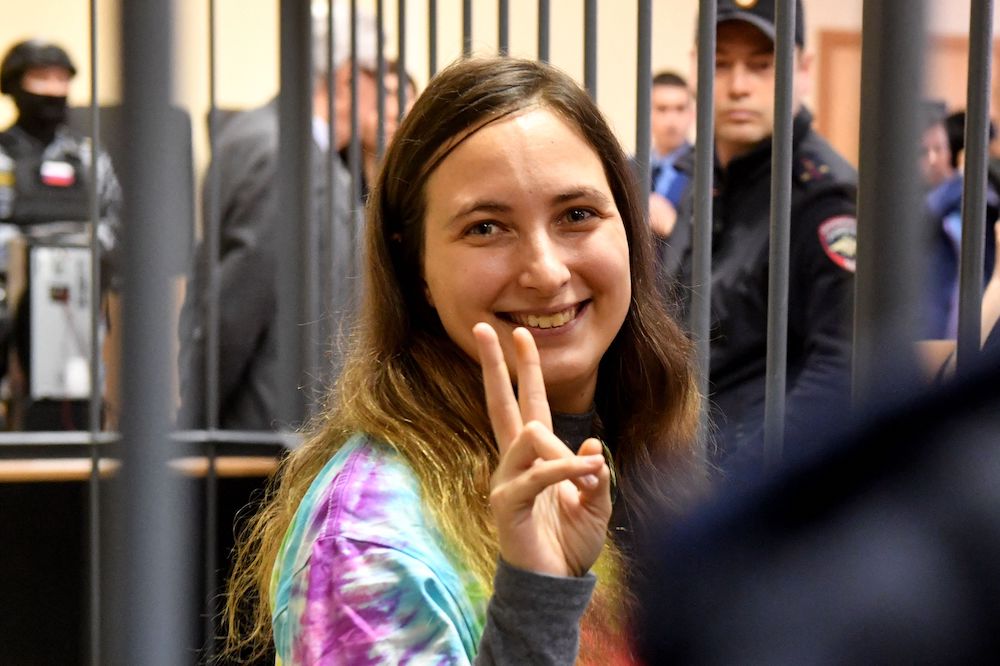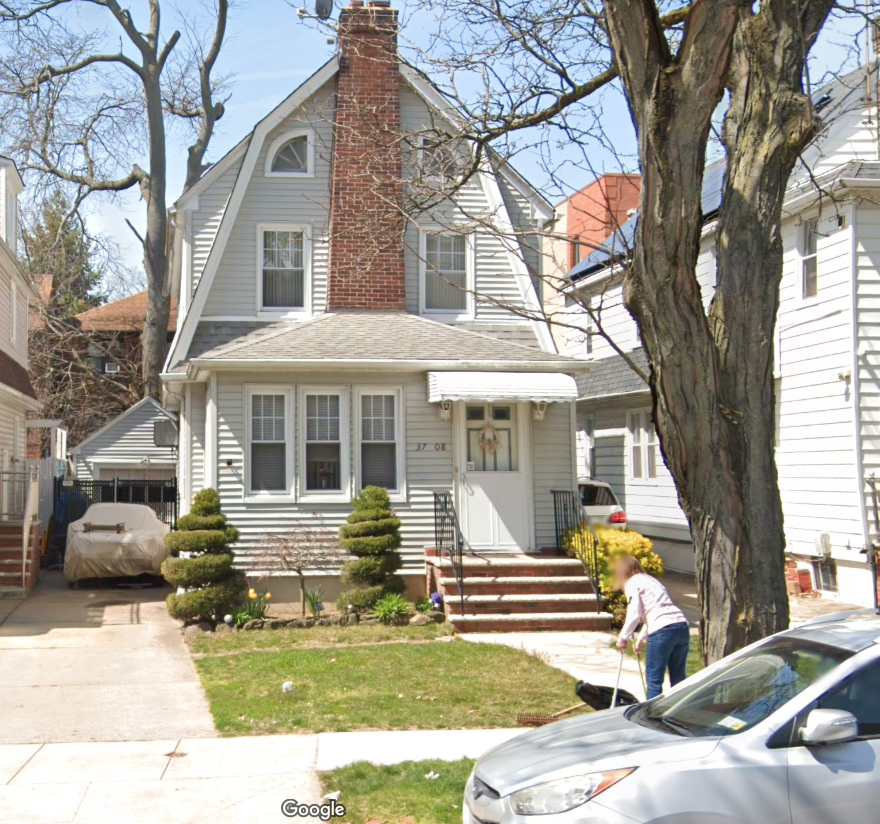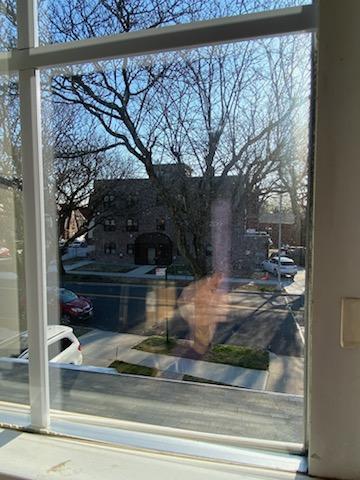The Paris Review – The Private Life: On James Baldwin
[ad_1]
JAMES BALDWIN IN HYDE PARK, LONDON. PHOTOGRAPH BY ALLAN WARREN. Via Wikimedia Commons, licensed under CC BY-SA 3.0.
In his review of James Baldwin’s third novel, Another Country, Lionel Trilling asked: “How, in the extravagant publicness in which Mr. Baldwin lives, is he to find the inwardness which we take to be the condition of truth in the writer?”
But Baldwin’s sense of inwardness had been nourished as much as it had been damaged by the excitement and danger that came from what was public and urgent. Go Tell It on the Mountain and Giovanni’s Room dramatized the conflict between a longing for a private life, even a spiritual life, and the ways in which history and politics intrude most insidiously into the very rooms we try hardest to shut them out of.
Baldwin had, early in his career, elements of what T. S. Eliot attributed to Henry James, “a mind so fine that it could not be penetrated by an idea.” The rest of the time, however, he did not have this luxury, as public events pressed in on his imagination.
Baldwin’s imagination remained passionately connected to the destiny of his country. He lacked the guile and watchfulness that might have tempted him to keep clear of what was happening in America; the ruthlessness he had displayed in going to live in Paris and publishing Giovanni’s Room was no use to him later as the battle for civil rights grew more fraught. It was inevitable that someone with Baldwin’s curiosity and moral seriousness would want to become involved, and inevitable that someone with his sensitivity and temperament would find what was happening all-absorbing.
Baldwin’s influence arose from his books and his speeches, and from the tone he developed in essays and television appearances, a tone that took its bearings from his own experience in the pulpit. Instead of demanding reform or legislation, Baldwin grew more interested in the soul’s dark, intimate spaces and the importance of the personal and the private.
In 1959, in reply to a question about whether the fifties as a decade “makes special demands on you as a writer,” Baldwin adopted his best style, lofty and idealistic and candid, while remaining sharp, direct, and challenging: “But finally for me the difficulty is to remain in touch with the private life. The private life, his own and that of others, is the writer’s subject—his key and ours to his achievement.”
Baldwin was interested in the hidden and dramatic areas in his own being, and was prepared as a writer to explore difficult truths about his own private life. In his fiction, he had to battle for the right of his protagonists to choose or influence their destinies. He knew about guilt and rage and bitter privacies in a way that few of his white novelist contemporaries did. And this was not simply because he was Black and homosexual; the difference arose from the very nature of his talent, from the texture of his sensibility. “All art,” he wrote, “is a kind of confession, more or less oblique. All artists, if they are to survive, are forced, at last, to tell the whole story, to vomit the anguish up.”
Baldwin understood the singular importance of the novel, because he saw the dilemma his country faced as essentially an interior one, as his fellow citizens suffered from a poison that began in the individual spirit and then made its way into politics. And his political writing remains as intense and vivid as his fiction, because he believed that social reform could not occur through legislation alone but required a reimagining of the private realm. Thus, for Baldwin, an examination of the individual soul as dramatized in fiction had immense power.
***
Baldwin’s reputation as a novelist and essayist rests mainly on the work he did in the decade before 1963, a decade in which he was passionately industrious. The year 1963 seems to have been a watershed for him. He wrote hardly any fiction in that year. It was a time in which “the condition of truth” could not be achieved by solitude or by silence or by slow work on a novel.
Baldwin began the year by going on a lecture tour for the Congress of Racial Equality, known as CORE. In the first few days of January, he met James Meredith, the first Black student to enroll at the University of Mississippi despite being denied admission by the state’s governor. Meredith noted how quiet Baldwin was, but he was also amused by Baldwin’s version of the dance known as the twist.
Also in January of 1963, Baldwin met Medgar Evers. They began to travel together in Mississippi, investigating the murder of a Black man and visiting the sort of churches that Baldwin’s stepfather, the model for the Gabriel of Go Tell It on the Mountain, would have preached in.
When Baldwin returned to New York, where he lived in a two-room walkup on West Eighteenth Street, he became involved, with Lorraine Hansberry and others, in various protests. He also had a busy social life. His biographer David Leeming writes: “He still had the ‘poor boy’s’ fascination with the rich and famous … and they were just as fascinated by him. He found it difficult to refuse their frequent invitations. In short, the work was not getting done.”
In the spring of 1963, to find peace, Baldwin traveled to Turkey, which had become one of his havens.
In May 1963, back in the U.S., Baldwin spoke in nine cities on the West Coast over ten days, earning around five hundred dollars a speech, all of which went to CORE. In that month, his face appeared on the cover of the mainstream magazine Time. Three days later, when a friend gave a party for him at a restaurant in Haight-Ashbury, “literally hundreds of people struggled at the windows … to get a glimpse of him,” Leeming reports.
Two days later, Baldwin was in Connecticut, and then, on two hours’ sleep, he went to New York for a meeting with Attorney General Robert Kennedy. On May 12, Baldwin had wired Kennedy, blaming the federal government for failing to protect nonviolent protestors who had been beaten by police in Birmingham, Alabama. Now, on May 24, Baldwin and other activists, including Hansberry, Lena Horne, and Harry Belafonte, met Robert Kennedy at his home. The meeting went nowhere. Its main result was to increase the FBI’s interest in Baldwin.
In this same year—1963—as Baldwin made speeches, attended meetings, and stayed up late, he had many plans for work, including a book on the FBI. James Campbell writes in his biography: “Baldwin never produced his threatened work on the FBI, but he had, as usual, a multitude of other plans in mind, including the slave novel—now retitled ‘Tomorrow Brought Us Rain’—a screen treatment of Another Country, a musical version of Othello, a play called ‘The 121st Day of Sodom,’ which [Ingmar] Bergman intended to produce in Stockholm, and a text for a book of photographs by … Richard Avedon.”
Baldwin worked on the Avedon text after the assassination of Medgar Evers on June 12, 1963. It has all the hallmarks of his best writing: the high tone taken from the Bible, from the sermon, from Henry James, and from a set of beliefs that belonged fundamentally to Baldwin himself and gave him his signature voice: “For nothing is fixed, forever and forever, it is not fixed; the earth is always shifting, the light is always changing, the sea does not cease to grind down rock. Generations do not cease to be born, and we are responsible to them because we are the only witnesses they have.”
In August, Baldwin flew some members of his family to Puerto Rico to celebrate his birthday. Then he went to Paris, where he led five hundred people in a protest to the U.S. embassy, returning to the U.S. in time for the March on Washington at the end of the month. In September he went to Selma to work on voter registration. The following month he went to Canada. In December, he traveled to Africa to celebrate the independence of Kenya.
When Baldwin was asked how and where he had written his play Blues for Mr. Charlie, he replied: “On pads in planes, trains, gas stations—all sorts of places. With a pen or a pencil. … This is a hand-written play.” It was the only writing he completed in 1963.
***
Part of James Baldwin’s fame arose from his skill as a television performer. On camera, he used clear, well-made sentences. At times, he spoke like a trained orator, channeling his views into sharp wit, fresh insight, irony, with impressive verbal command. What he displayed was an intelligence that could quickly become grounded and combative and political once the television lights were on.
In some early appearances such as one on The Dick Cavett Show with the Yale philosopher Paul Weiss, Baldwin’s arguments were too complex for the short time he had been allotted. Because his delivery was slightly halting—he was articulate in bursts—he was too easy to interrupt, and he was always at his best when he could speak without interruption. It was as though he was sometimes too thoughtful for television.
This, of course, also gave him an edge. It meant that he was not mimicking politicians or TV regulars. He sought to challenge, and to set about thinking aloud. There were moments when he loved a simple question so that the answer could be ruminative and complicated. He used a context such as a talk show to state the most difficult truths in a style that belonged to the sermon or the seminar more naturally than the television studio.
He knew how to slow down, so that the camera lingered on his face as he prepared himself to say something difficult. He had a way, when he was about to offer an opinion that might seem extreme or unpalatable to his host or his audience, to hesitate, to let the camera see him thinking, and then to return to fluency.
At times, Baldwin’s manner in television interviews and in public debates could be scathing and indignant. But he could also be calm and self-possessed. In a 1963 debate in Florida, for example, even though his fellow panelists were hostile, Baldwin remained polite. He was ready to talk about the private life, the creation of the self, in a way that no one could argue with, since he himself had set the tone and the terms. He was also ready to make clear that the lives of white people, too, had been maimed by segregation. But what was most notable is how he moved his face towards the light, how he spoke with authority, and how at home he seemed to be in a television studio.
There were times when Baldwin appeared like a method actor playing out the part of thoughtfulness, working out as the camera rolled how a man considering things carefully might appear.
While he could be provocative, he was also measured. He exuded a sort of melancholy wisdom. At times, he managed to sound optimistic, especially in a panel discussion in August 1963, at the time of the March on Washington, when he was in the company of Harry Belafonte, Marlon Brando, Sidney Poitier, and Charlton Heston.
When Lionel Trilling wrote of the “extravagant publicness in which Mr. Baldwin lives” and wondered how Baldwin might find “the inwardness which we take to be the condition of truth in the writer,” Trilling was still in a world where it was presumed that writers should be quiet and stay home. And Trilling was not alone in believing that Baldwin was destroying his talent by going on television, writing articles, giving speeches, and being distracted by whatever was happening on the street.
But Baldwin belongs to a group of writers, born in the twenties and early thirties, who wrote both fiction and essays with a similar zeal and ambition; they did not see nonfiction as a lesser form or reporting as a lesser task. It was not easy to make a judgment on whether they were mainly novelists or, more likely, essayists who happened to write fiction. Also, it was often hard to make a judgment on what constituted their best work.
For example: Norman Mailer’s The Armies of the Night and his Miami and the Siege of Chicago, both works of imaginative and original political reporting, may equal his best novel, The Executioner’s Song. So, too, V. S. Naipaul’s long essay on the dictatorship in Argentina, “The Return of Eva Perón,” and his autobiographical essay Finding the Center may match in power his novels A House for Mr. Biswas and The Enigma of Arrival. Joan Didion’s Slouching Towards Bethlehem and The White Album may be better than her novels A Book of Common Prayer and Democracy.
These writers—Baldwin, Mailer, Naipaul, Didion—traveled, took an interest in life, and accepted commissions from editors. And all four understood that if writing is a display of personality, then their literary personality was, no matter what form they used, lavish enough to blur the distinction between reportage and high literary fiction.
But there were also times when all four of them took on too much; their interest in a subject was sometimes not equaled by their account of it. Baldwin’s book on the child murders that occurred between 1979 and 1981 in Atlanta, The Evidence of Things Not Seen, is slack and rambling; Mailer’s Advertisements for Myself and Marilyn: A Biography are not quite readable now, their egotism bloated and out of control; Naipaul’s travel books often present someone too mean and irascible, more interested in showing off his own crankiness than in exploring the world outside. And Joan Didion’s book Salvador might have been helped by more research.
What is fascinating about Baldwin’s occasional journalism and speechmaking is how uneven it is, and how rapidly this can give way to insights and sharp analysis and then a glorious, sweeping, seemingly effortless final set of statements and assertions.
While he worked fast on these stray pieces for magazines, Baldwin refused to settle for a simplified version of his own oppression. Instead, he combined irony and urgency in the same thought, seeking a manner that took its bearings from somewhere high above us, perhaps even from his own unique access to the word of the Lord.
“In a very real sense,” he wrote, “the Negro problem has become anachronistic; we ourselves are the only problem, it is our hearts only that we must search.”
In “As Much Truth as One Can Bear,” a New York Times Book Review article from January 14, 1962, when others might have been concerned about the police or about housing, Baldwin wrote about private loneliness as though it were the most pressing problem facing Americans: “The loneliness of those cities described in [the work of John] Dos Passos is greater now than it has ever been before; and these cities are more dangerous now than they were before, and their citizens are yet more unloved … The trouble is deeper than we wished to think: the trouble is in us.”
Sometimes, in his journalism and in his speeches, Baldwin was amusing himself. He took words such as equality or identity and concepts such as whiteness and examined them with a mixture of mischief and a sort of Swiftian contempt.
For example, in an address to Harlem teachers in October 1963, he sought to explode the myth of the original, heroic, white settlers in America: “What happened was that some people left Europe because they couldn’t stay there any longer and had to go some place else to make it. That’s all. They were hungry, they were poor, they were convicts. Those who were making it in England, for example, did not get on the Mayflower.”
In an essay called “The White Problem,” published in 1964, Baldwin wrote scornfully about the vast difference between the white and black American celebrities. He wrote, “Doris Day and Gary Cooper: two of the most grotesque appeals to innocence the world has ever seen. And the other, subterranean, indispensable, and denied, can be summed up, let us say, in the tone and in the face of Ray Charles. And there never has been in this country any genuine confrontation between these two levels of experience.”
He sought to elevate what was complex, multifarious, intricate. In 1966, he wrote: “Much of the American confusion, if not most of it, is a direct result of the American effort to avoid dealing with the Negro as a man.”
Since he had it in for easy and fixed categories, he was bound eventually to become eloquent about how his society dealt with the idea of men and masculinity.
In the early sixties, Baldwin spoke in an interview with Mademoiselle magazine about sexuality in his customarily challenging tone: “American males are the only people I’ve ever encountered in the world who are willing to go on the needle before they go to bed with each other.”
While early in his career Baldwin did not speak directly about his own sexuality, others were ready to offer hints and innuendos. A 1963 Time magazine profile, for example, described Baldwin as a “nervous, slight, almost fragile figure, filled with frets and fears. He is effeminate in manner, drinks considerably, smokes cigarettes in chains.”
When Lionel Trilling worried about Baldwin’s “extravagant publicness,” the implications of the word extravagant would not have been lost on many readers. And when Norman Mailer wrote of Baldwin that “even the best of his paragraphs are sprayed with perfume,” he would not have been easily misunderstood. Also, the extensive FBI file on James Baldwin includes the sentence: “It has been heard that Baldwin may be a homosexual and he appeared as if he may be one.”
Baldwin, in his own writings, was often careful. He liked complex connections, strange distinctions, ambiguous implications. Thus, even in a time when gay identity was becoming easier to denote or define, Baldwin resisted the very concept of gay and straight, even male and female, insisting in an essay in 1985 that “Each of us, helplessly and forever, contains the other—male in female, female in male, white in black and black in white. We are part of each other. Many of my countrymen appear to find this fact exceedingly inconvenient and even unfair, and so, very often, do I. But none of us can do anything about it.”
Religious elements in the civil rights movement were suspicious of both Baldwin and Bayard Rustin, a prominent organizer and activist who was close to Martin Luther King Jr. While King was not personally bothered by Rustin’s homosexuality, some of his colleagues were. One of them suggested that Baldwin and Bayard “were better qualified to lead a homosexual movement than a civil rights movement.” Baldwin’s homosexuality may have been one of the reasons why he was not invited to speak at the March on Washington in 1963.
But these were minor irritations compared to what happened when Baldwin’s fellow activists began to absorb fully the implications not only of Giovanni’s Room but also of Another Country. This third novel, published in 1962, became a bestseller. Its Black hero, Rufus, in the words of the Black Panther leader Eldridge Cleaver, was depicted as, “a pathetic wretch who indulged in the white man’s pastime of committing suicide, who let a white bisexual homosexual [sic] fuck him in the ass, and who took a Southern Jezebel for his woman.”
Cleaver, in his book Soul on Ice, published in 1968, wrote, “It seems that many Negro homosexuals … are outraged and frustrated because in their sickness they are unable to have a baby by a white man. … Homosexuality is a sickness, just as are baby-rape or wanting to become the head of General Motors.” Later, in an interview with The Paris Review in 1984, Baldwin said “My real difficulty with Cleaver, sadly, was visited on me by the kids who were following him, while he was calling me a faggot and the rest of it.”
It would have been easy then for Baldwin to have gone into exile, disillusioned and sad, to have written his memoirs and become nostalgic about the glory days of the civil rights movement. Indeed, he was planning to write a book about the murdered leaders Medgar Evers, Malcolm X, and Martin Luther King.
But this is not what happened. As the sixties went on, Baldwin became energized and excited by the Black Panthers, whose leaders he first met in San Francisco late in 1967. The three leaders—Huey Newton, Bobby Seale, and (despite their antipathies) Eldridge Cleaver—were, David Leeming writes, “as far as Baldwin was concerned, the future of the civil rights movement. … Baldwin admired the radicals; he saw them as part of the larger ‘project’ of which the old civil rights movement had been only a stage.” Baldwin wrote a preface to one of Seale’s books and supported Newton when, soon after their first meeting, he was arrested and imprisoned.
He also became more militant in his television interviews. For example, in an interview with Dick Cavett aired on June 16, 1969, he said: “If we were white, if we were Irish, if we were Jewish, if we were Poles, if we had in fact, in your mind, a frame of reference, our heroes would be your heroes too. Martin would be a hero for you and not be a threat, Malcolm X might still be alive. Everyone is very proud of brave little Israel, a state against which I have nothing—I don’t want to be misinterpreted, I am not an anti-Semite. But, you know, when the Israelis pick up guns, or the Poles or the Irish or any white man in the world says, ‘Give me liberty or give me death,’ the entire white world applauds. When a black man says exactly the same thing, word for word, he is judged a criminal and treated like one and everything possible is done to make an example of [him] so there won’t be any more like him.”
***
Two weeks before he died, the poet W. B. Yeats wrote a poem called “Cuchulain Comforted,” which began with a series of statements free of metaphor. The poem was written in terza rima, a form that was new for Yeats. Unusually, this poem did not need many drafts. It seems to have come to him easily, as if naturally. In earlier Yeats poems and plays, Cuchulain, a figure from Irish mythology, had appeared as the implacable, solitary, and violent hero, prepared for solo combat, free of fear. Now he has “six mortal wounds” and is attended by figures, Shrouds, who encourage him to join them in the act of sewing rather than fighting. They let him know that they themselves are not among the heroic dead but are “Convicted cowards all by kindred slain // Or driven from home and left to die in fear.”
Thus, at the very end of his life, Yeats created an image that seemed the very opposite of what had often given vigor to his own imagination. His heroic figure has now been gentled; his fierce and solitary warrior has joined others in the act of sewing; instead of the company of brave men, Cuchulain seems content to rest finally among cowards.
This poem is not a culminating statement for Yeats, but a contradictory one; it is not a crowning version of a familiar poetic form, but an experiment in a form—terza rima—associated most with Dante. Instead of attempting to sum up, it is as though Yeats wished to release fresh energy by repudiating, by beginning again, by offering his hero a set of images alien to him, which served all the more to make the hero more unsettled, more ambiguous.
How fascinating to see a writer abandon bold self-assertion and, however briefly, find a tone that is compassionate and genial and tender.
There was, however, no such moment in Baldwin. From the beginning, he displayed his own vulnerability, his own softness, sometimes as a weapon but mostly as a way of transforming an argument so that it was not a contest to be won but rather a question to be reframed—to be moved from the narrow confines of the public realm back towards the unsettled (and unbounded) space of the self, the questing, uneasy spirit.
Adapted from On James Baldwin by Colm Tóibín, now available from Brandeis University Press.
Colm Tóibín’s most recent book is The Magician. He was interviewed by Belinda McKeon in issue no. 242 of The Paris Review.
[ad_2]
Source link





















